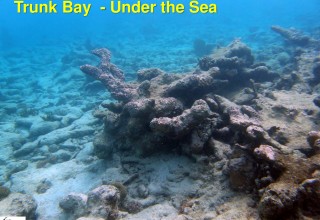USVI's Landmark 'Toxic 3 Os' Sunscreen Ban Becomes Law: Most Far-Reaching Protections & Earliest Implementation in the U.S.

ST. JOHN, U.S. Virgin Islands, August 6, 2019 (Newswire.com) - Governor Albert Bryan Jr. recently made history with the signing of Act 8185, banning the importation, sale and distribution of sunscreen containing the “toxic 3 Os” of oxybenzone, octinoxate and octocrylene in the territory, protecting coral, marine life and human health. The legislation, which passed unanimously and was co-sponsored by eight senators led by Senator Marvin A. Blyden and Senator Janelle K. Sarauw, makes the USVI the first to embrace the FDA’s recent announcement recognizing only zinc oxide and titanium dioxide (mineral sunscreen) as safe and effective sunscreen ingredients. The USVI ban adds the ingredient octocrylene to the chemicals prohibited in Hawaii and Key West, meaning safer mineral sunscreens become the default choice. The full ban goes into effect nine months earlier than the other U.S. bans, on March 30, 2020, with certain limitations beginning immediately.
“Tourism in the Virgin Islands is our lifeblood – but to ensure we continue to entice visitors with our world-class beaches and natural beauty in the coming years, we need to protect our coral reefs as part of our quest to initiate sustainable tourism,” said Governor Albert Bryan Jr. “This is crucial all over the Caribbean and I call on others to join me. We all share and must protect our oceans.”
According to the National Oceanic and Atmospheric Administration (NOAA), there is scientific evidence indicating that oxybenzone is deadly to coral and threatens overall reef health. Immediately upon the governor’s signing, retailers are no longer permitted to place new orders for sunscreen containing oxybenzone, octinoxate and octocrylene and are barred from receiving shipments after Sept. 30, 2019. The inclusion of octocrylene in the ban is critical as it is often used in combination with other dangerous chemicals such as avobenzone, so a ban of octocrylene effectively eliminates those ingredients as well.
“Coral reefs have the highest biodiversity of any of the planet’s eco-systems and are vital to protecting coastlines and supporting marine life, yet the Caribbean has lost 80% of reefs,” said Senator Blyden. “Safeguarding what we have is vital to tourism as well as our fishing industry and our islands in general.”
Senator Sarauw added, “These chemicals not only poison our waters, they poison us. They have been found in breast milk, blood and urine and cause cell damage that may lead to cancer, disrupt hormones and can cause severe allergies. There are safer, more sustainable alternatives such as non nano mineral sunscreens that don’t injure our reefs or our health.”
“This groundbreaking ban will offer protections to the environment and our health but equally important to laws is building awareness of the dangers of these chemicals vs. safer alternatives such as mineral sunscreens. These chemicals are more than 40 times acceptable levels in territory waters,” said Island Green Living Association President Harith Wickrema. The St. John nonprofit has been leading the campaign on education about the hazards of toxic sunscreen since 2016. “In addition to environmental and human harm, tourism-based economies will experience financial devastation if coral and marine life die off. The ripple effect would be huge and we need to take action now.”
“The ban of sunscreens toxic to corals and their larvae is an important step in the protection of the coral reefs of the US Virgin Islands,” said Dr. Paul Jobsis, Director of the Center for Marine & Environmental Studies, University of the Virgin Islands. “Along with toxic sunscreens entering our ocean, overfishing, uncontrolled runoff, and warming climate contribute to degradation of our coral reefs. I am proud that the US Virgin Islands is leading the way and has passed legislation that will help our coral reefs and bring attention to their importance to our economy and ecology.”
The “toxic 3 Os” in sunscreen wash off people’s bodies when they swim and cause coral bleaching, “zombie” coral which looks healthy but is unable to reproduce as well as other issues. It also gets into the ocean when wastewater and runoff washes into the sea. The good news is that once these chemicals are out of the water, the coral can rejuvenate.
Instead of chemical sunscreen, non-nano mineral sunscreen containing zinc oxide and titanium dioxide protect against the sun and do not harm coral. A list of more than 300 coral-safe sunscreens can be found at www.islandgreenliving.org. Coverings such as rash guards and hats also are effective against the sun’s damaging rays.
The danger of toxic sunscreen received unexpected attention thanks to President Bill Clinton, when he credited Wickrema for educating him about the hazards of the “toxic 3 Os” during his speech at the USVI CGI Post-Disaster Recovery Event in early June. Clinton went on to urge attendees to use only coral-safe sunscreen. “We’ve got to do this,” he said.
Established in 2004, Island Green Living Association is a registered 501(c)(3) not for profit organization on St. John dedicated to sustainability throughout the USVI. www.islandgreenliving.org.
# # #
ISLAND GREEN MEDIA CONTACT:
Lisa Herbst, 347-393-2948, lisagherbst@gmail.com
Source: Island Green Living Association



